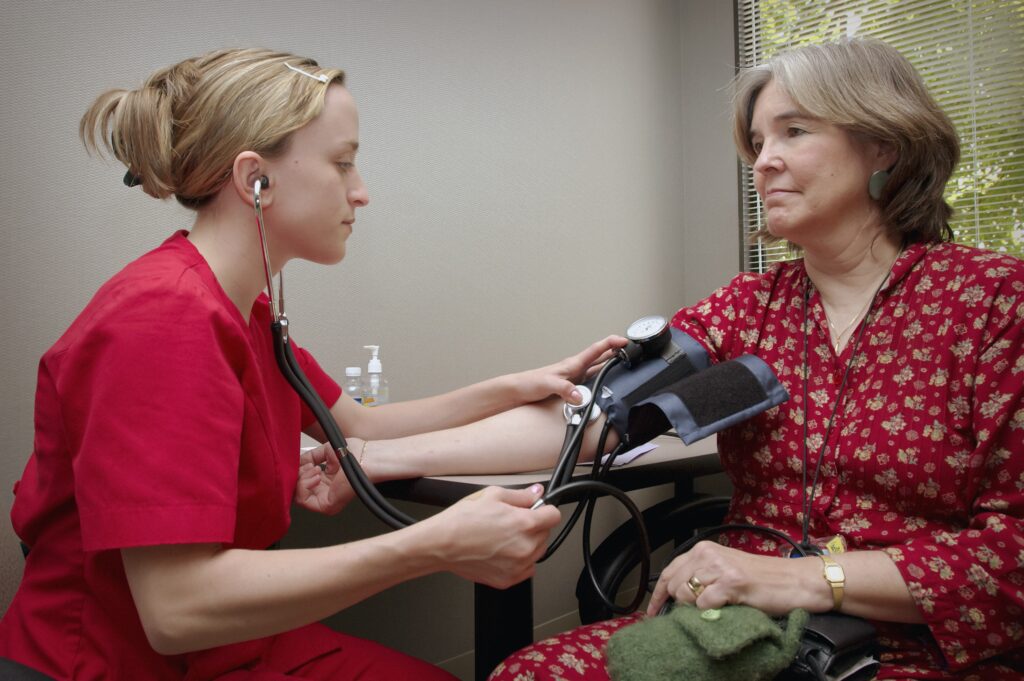
Assessment Types
Conestoga provides students with a wide range of assessment types. This tip describes the goals for choosing evaluation types, explains how discrete assessments fall within category and component descriptions, and provides a comprehensive list of types of assessments.
Goals
A number of goals for teaching and learning are achieved when faculty understand the type of assessments they are using in their courses.
- Ensure that students are clearly informed about the types of evaluation that will occur in each course.
- Increase clarity over the meaning of quiz, test, and exam and other evaluation terms.
- Ensure clarity when course is delivered by multiple faculty.
- Encourage more variety. For example, if a course is primarily multiple choice (MC), the data collected might be triangulated with other types of evaluation measures.
- Collect useful information for reports. This would allow us to provide evidence of the variety of evaluation type’s faculty use to measure attainment of the course outcomes and evidence that we evaluate Essential Employability Skills.
Types of Assessments
You may be familiar with specific types of assessments, such as an in-class quiz or final exam. Most discrete assessments belong to a broader category that have various components that determine that particular assessment. Here is a list of the main evaluation categories and the various components that determine different types of assessments.
- Exams (written exam, practical exam)
- Tests (practical exam, written test)
- Quizzes (in class quiz, online quiz)
- Assignments (presentation, practical, problem-based, visual, written, log book, portfolio)
- Case study
- Practical Assignment (tasks, code segments, labs, shop assessment, skill demos, program evaluation plan, logic model, programming code/revisions, simulations
- Projects (capstone, keystone, projects)
- Professionalism (external certification, external requirements, peer-assessment, professionalism, self-assessment)
- Peer grade
- Thesis/Dissertation
The type of exam may may be determined by whether the exam component is written or practical. For example, an exam used in hands-on skill areas may distinguish a “Practical Final Exam” from a “Final Exam.” Note that all discrete assessment types with similar components should share the same criteria.
| Main Evaluation Category | Evaluation Component | Discrete Item/Type | Criteria for Component |
|---|---|---|---|
| Exam(s) | Exam | Final Exam Mid-Term Exam Oral Exam Summative Exam | Weighted at 25-40% of grade (per exam) Evaluated mid-semester or end of semester Administered under supervision (not take home) Considered high stakes for the student Completed within a time limit |
| Practical Exam | Exams Mid-Term Practical Exam Final Practical Exam | Used in hands-on skill areas Weighted at 25-40% of grade (per exam) Evaluated mid-semester or end of semester Administered under supervision (not take home) Considered high stakes for the student Completed within a time limit |
Assessment Types
See below for a list of types of assessments that have been arranged by evaluation category and component descriptions. Or, download a copy to refer to.
| Main Evaluation Category | Evaluation Component | Discrete Item | Criteria for Component As per policy, no one component can be weighted at more than 40% |
|---|---|---|---|
| Exam(s) | Exam | Final Exam Mid-Term Exam Oral Exam Summative Exam | – weighted at 25-40% of grade (per exam) – evaluated mid-semester or end of semester – administered under supervision (not takehome) – considered high stakes for the student completed within a time limit |
| Practical Exam | Exams Mid-Term Practical Exam Final Practical Exam | – used in hands-on skill areas – weighted at 25-40% of grade (per exam) – evaluated mid-semester or end of semester – administered under supervision (not takehome) – considered high stakes for the student completed within a time limit | |
| Test(s) | Practical Test | Demonstration Test Practical Test Skill-Based Test | – includes practice, skills -based tests that may involve timed demonstrations – weighted at 10-25% of grade (per test) administered at any point in semester – administered under supervision – differs from an exam in that it usually assesses fewer outcomes and is of less weight |
| Test | Final Test Formative Test Mid-Term Test Summative Test Lab Notebook/Report Test | – weighted at 10-25% of grade (per test) – administered at any point in semester – administered under supervision – differs from an exam in that it usually assesses fewer outcomes and is of less weight | |
| Quiz(zes) | Quiz(zes) | eConestoga Quiz(zes) In-Class Quiz(zes) Multiple Choice Quiz(zes) Online Quiz(zes) Publisher’s Quiz(zes) | – weighted up to 10% of grade (per quiz) – no pop quizzes |
| Assignment(s) | Assignment – Alternative Presentation | Audio recording Documentary Filmed Presentation Guided tour Pecha kucha Podcast Public demonstration Screenshot tutorial | – develops skills related to presentation skills and communication which may also include critical thinking, problem solving, information management and interpersonal skills – provides feedback on the attainment of course outcomes – administered at any point in the semester |
| Assignment In-class Presentation | Debates Group Presentations Poster session Seminar Slideshow presentation Student demonstration Student-led lecture/talk Student-led lesson | – develops skills related to presentation skills and communication which may also include critical thinking, problem solving, information management and interpersonal skills – provides feedback on the attainment of course outcomes – administered at any point in the semester | |
| Assignment(s) Practical | Code Segments Mock Interview Programming Code Programming Code Revision | – develops and provides feedback on Essential Employability Skills related to practical skills as well as evidence of attainment of the course outcomes. | |
| Assignment – Problem Based | Calculations In-Class Task Problem Analysis Schedules Spreadsheets Timelines | – develops skills related to written tasks which may include communication, critical thinking, problem solving and information management – provides feedback on the attainment of the course outcomes – administered at any point in the semester | |
| Assignment – Visual | Blueprints Drawings Comic Strip/Graphic Narrative Concept Map Infographic Photo Essay Physical/Virtual Mode Visual Artwork. Visual Timeline Web Page | – develops skills related to written tasks which may include communication, critical thinking, problem solving and information management – provides feedback on the attainment of the course outcomes – administered at any point in the semester | |
| Assignment – Written | Abstracts Activity Log Annotated Bibliographies Blogs Business Reports Care Plans Concept Maps Court Documents Critical Incident Accounts Discussion Board Postings Essay(s) Executive Summaries Field Reports In-Class Tasks Interview Reports Journals Lab Report(s) Legal Memorandum Notebook Entries Performance Plans Poem/Poetry Portfolio Portfolio Tasks Professional Communication /Documentation Reflections Reflective Journal Report(s) Research Paper(s) Reviews Technical Report(s) Training Logs | – develops skills related to written tasks which may include communication, critical thinking, problem solving and information management – provides feedback on the attainment of the course outcomes – administered at any point in the semester | |
| Log Book | Data Table Notes | – record of important events, measurements and data – develops skills related to the practical application of skills needed for the course – provides feedback on the attainment of course outcomes – administered at any point in the semester | |
| Portfolio | Electronic portfolio Paper-based Portfolio | – student-generated evidence (documents, photos, testimonials, etc.) to demonstrate progression of a specified set of learning outcomes which may include skills that demonstrate initiative, creativity and organization of content – provides feedback on the attainment of course outcomes – administered at any point in the semester | |
| Required Preparation | Tasks | – tasks which are assigned then later marked or reviewed in class to provide formative assessment and feedback | |
| Case Study(s) | Case Study | Case Study Analysis Case Study Reports Case Study Reviews Case Study Writing | – an analysis or detailed examination of a subject of study including the related contextual conditions for the study – provides feedback on the attainment of the course outcomes – administered at any point in the semester |
| Practical Assignment(s) | Assigned Tasks | – includes minimally weighted tasks (*valued at less than 10%) – formative in nature | |
| Code Segments | – develops skills through practical application – administered at any point in the semester | ||
| Practical Lab | – a set of laboratory tasks assigned which may be in-class or take-home | ||
| Practical Shop Assessment(s) | – submission of a product or repair demonstrating the course outcomes – may include process elements | ||
| Practical Skill Demonstration(s ) | – live or recorded evidence of the ability to perform a skill – examples include practicum, and clinical demonstrations, conducting interviews, performing counselling skills, simulations, performing on-camera etc. | ||
| Program Evaluation Plan | – develops skills through practical application administered at any point in the semester | ||
| Program Logic Model | – develops skills through practical application administered at any point in the semester | ||
| Programming Code | – develops skills through practical application administered at any point in the semester | ||
| Programming Code Revisions | – develops skills through practical application administered at any point in the semester | ||
| Simulation | – a goal-oriented evaluation involving a practical application of the course content. The student is immersed in a situation which imitates a real-world situation. The assessment involves integration of higher order thinking skills such as critical thinking, decision making, analysis, etc. | ||
| Project(s) | Capstone or Keystone Project | Capstone Checkpoint(s) Critique(s) Design Report/Reviews Final Project Report (Group) Final Project Report (Individual) Formative Feedback Group Project Individual Project Interim/Midterm Report(s) Keystone Presentation(s) Progress Checks Progress Report(s) Project Budget(s) Project Closure Project Definition /Conception Project Execution/Launch Project Initiation Project Monitoring &Control Project Outline/Abstract (Group) Project Outline/ Abstract (Individual) Project Planning Project Proposal (Group) Project Proposal (Individual) Project Schedule(s) Research Reports Time Tracking | |
| Project(s) | Checkpoint(s) Communication plan Final Project Presentation (Group) Final Project Presentation (Individual) Final Project Report (Group) Final Project Report (Individual) Formative Feedback Group Project Group Project Recommendations Individual Project Project Charter Project Outline/ Abstract (Group) Project Outline/ Abstract (Individual) Project Proposal (Group) Project Proposal (Individual) Stakeholder analysis Team Contract | – cumulative enterprise that is carefully designed and planned – may include products created over time involving teamwork, peer-to-peer feedback, and experiential learning – component options may be broken down into chunks to scaffold the project over the term | |
| Professionalism | External Certification | accreditation may require the passing of a particular component which needs to be listed as a required part of the course, for example WHMIS | |
| External Requirement | Some programs have a dictated attendance requirement. Attendance should only be used in those courses. | ||
| Peer Assessment | – maximum 10% of final grade – faculty provides guidelines and training on use of the rubric, oversight, and has final say on the mark | ||
| Professionalism | – 5%-20% of final grade – Provides feedback on the attainment of related course, program, and/or Essential – Employability Skill (EES) outcomes (e.g., documentation, tool maintenance, support of project team, etc.) | ||
| Self-Assessment | – guided critical reflections on process, product, learning plans, and learning contracts – faculty provides guidelines and training on use of the rubric, oversight, and has final say on the mark | ||
| Peer Grade | Peer Grade | – maximum 10% of final grade. – faculty provides guidelines and training on use of the rubric, oversight, and has final say on the mark. | |
| Thesis/ Dissertation | Abstract/ Executive Summary | – long essay or dissertation involving personal research, written by a candidate for a college degree | |
| Draft | |||
| Final Thesis/Dissertation Report | |||
| Literature Review | |||
| Presentation | |||
| References | |||
| Research | |||
| Thesis/Dissertation Presentation |
Process for Choosing Assessments
When developing or revising a Course Outline, faculty can choose
- only the main category (e.g. Assignment) or other
- the evaluation component within a category (e.g., Assignment – Presentation) or other
- The actual assignment type
Only the most descriptive, most specific label will be shown on the outline.
Note that no one component can be weighted at more than 40%.
It is usually wise to choose the fewest number of evaluations from which you can get the information, or the evidence needed to assess student learning against the course outcomes. Minimizing the number helps to make the delivery flexible when a course is condensed to fewer weeks. It also helps to manage the scheduling of evaluations over the semester. A typical 42-hour course may work well with 4-8 substantive (6% or greater) evaluations possibly supplemented by low stakes (5% or less) mini quizzes or tasks.






